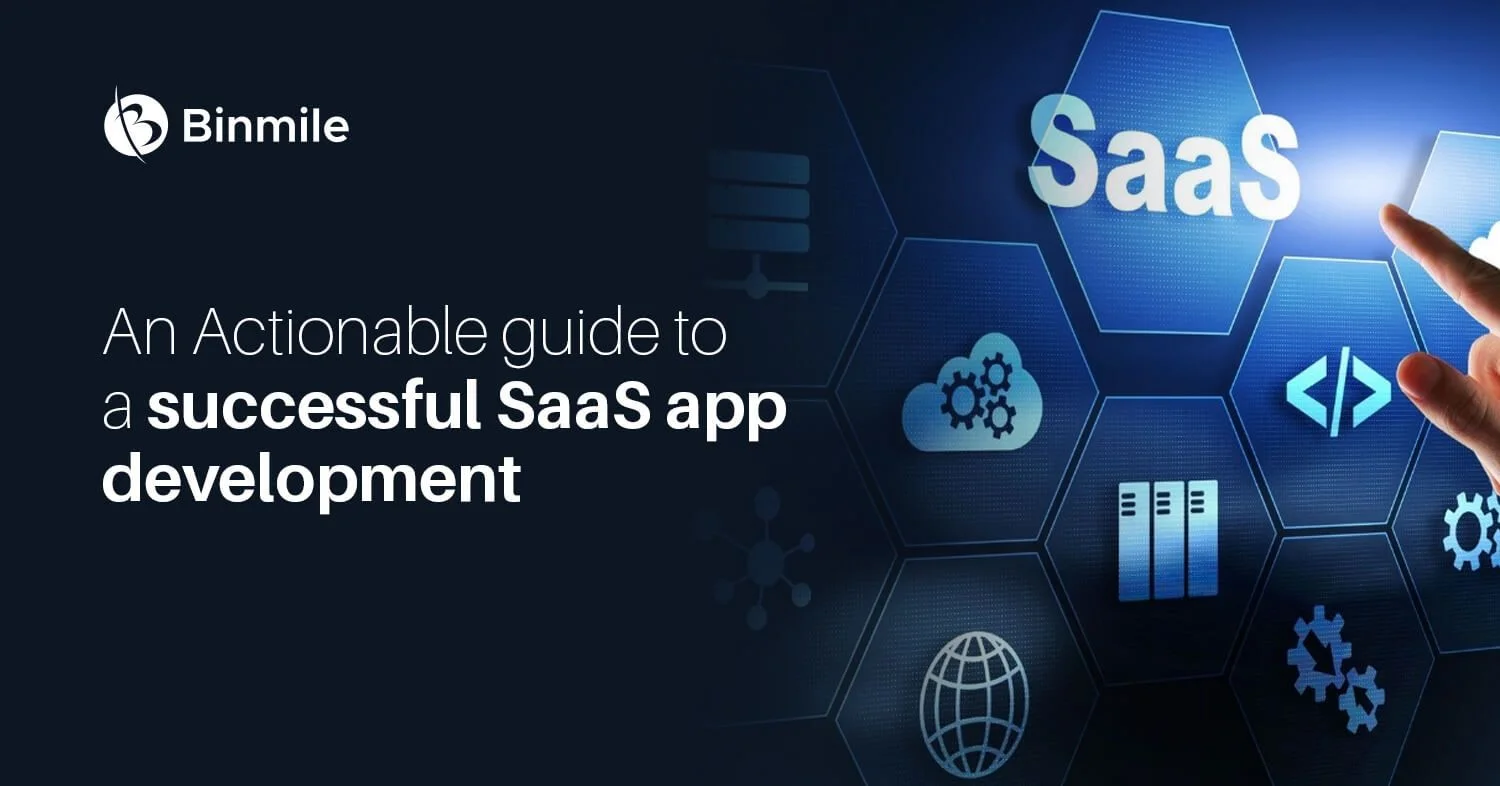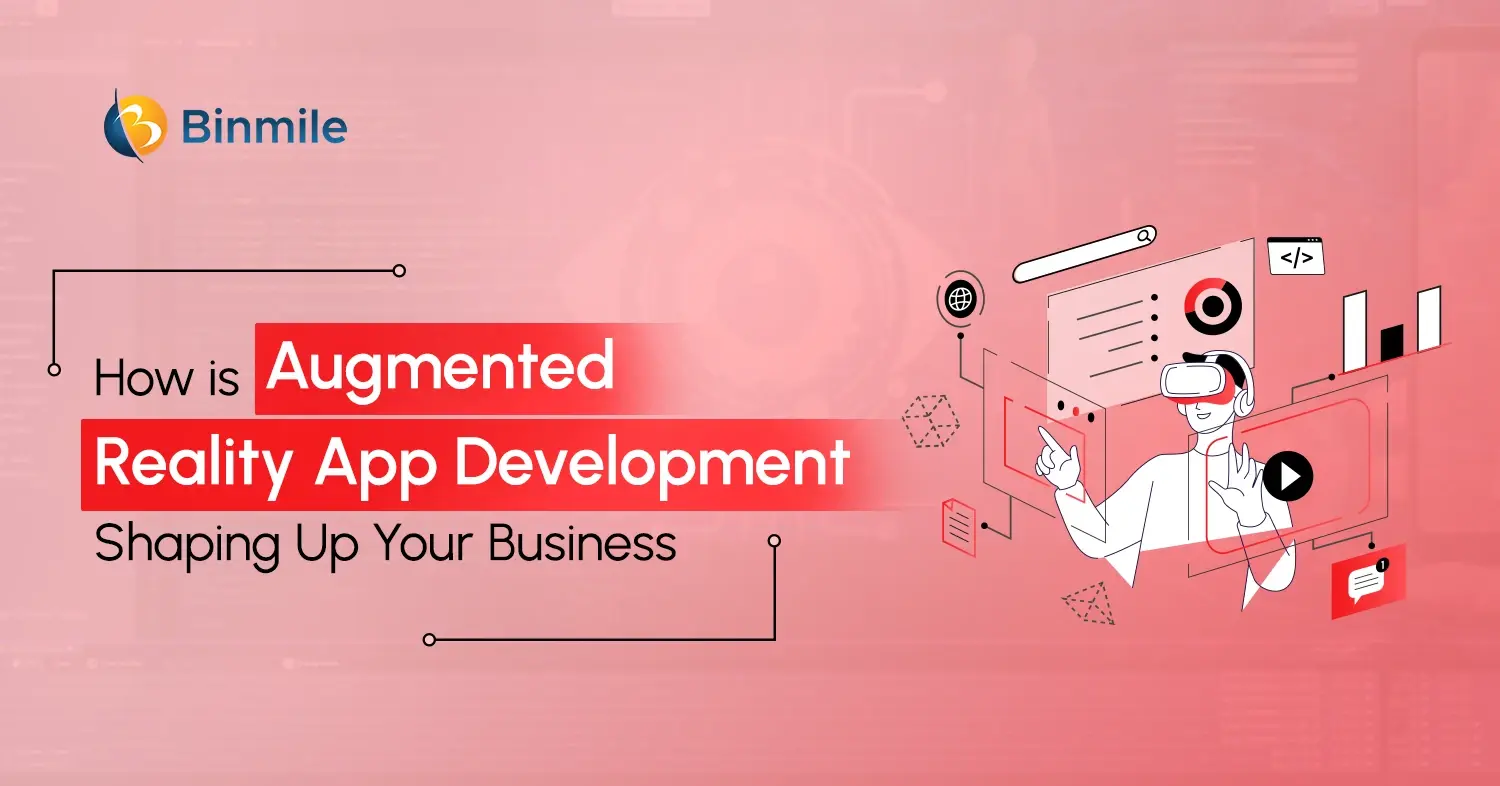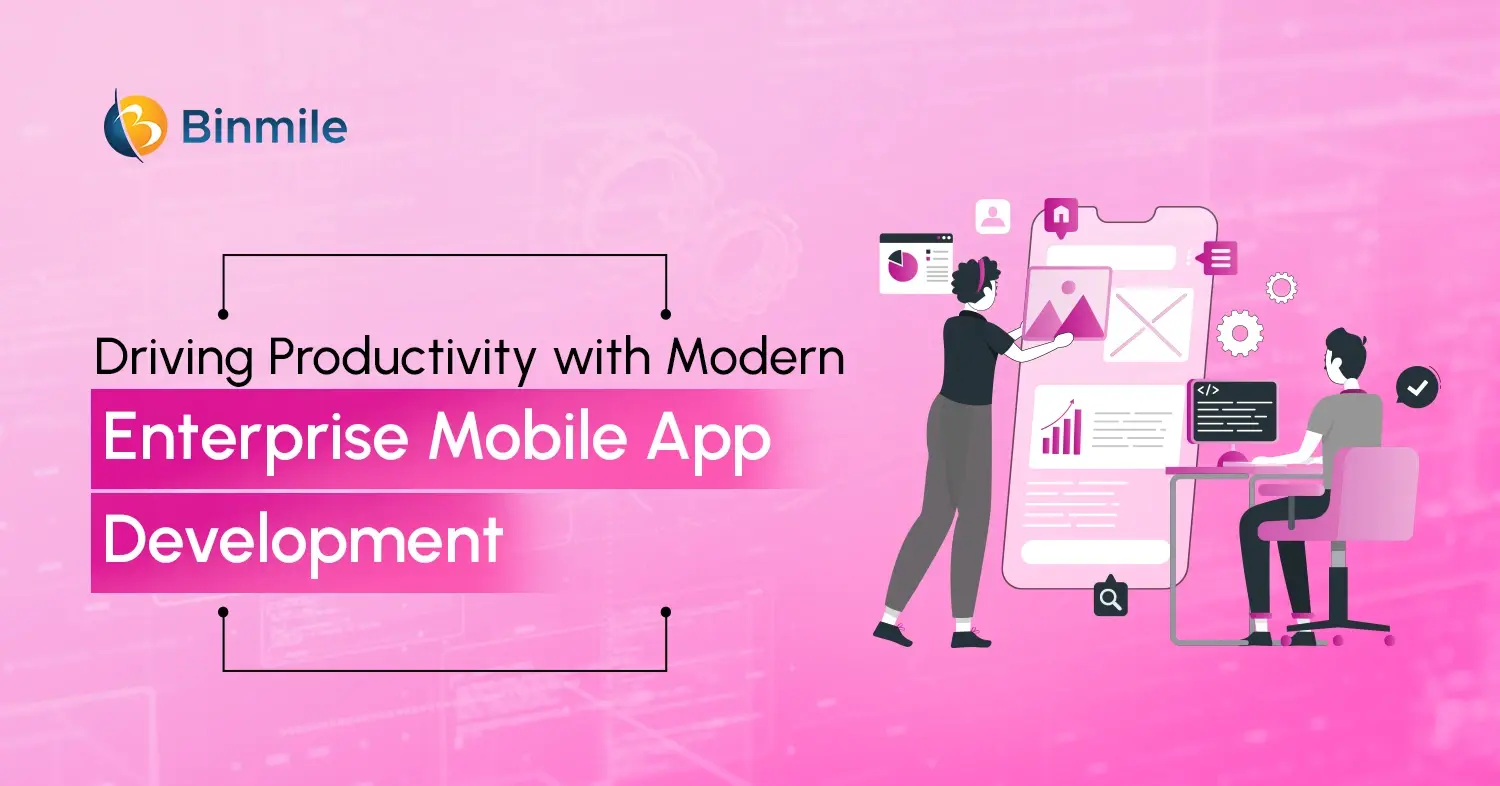The ever-increasing popularity of SaaS or Software as a Service solution is undeniable proof of its long-term viability and productivity for companies around the world. From Netflix, Spotify, and Trello to Buffer, Hubspot, and Dropbox, these renowned companies have been leveraging the inherent power of SaaS products for over a decade. Their reliance on the SaaS delivery model outlines an emphatic acknowledgment of the cost-effectiveness of SaaS as an intelligent delivery model in today’s highly-segmented market encompassing both large and small businesses.
Therefore, if you are thinking of launching your startup anytime soon, you are advised to go for the SaaS model. The cost-effective nature of SaaS apps is catching up fast among businesses worldwide. Their market size is also estimated to reach USD 208 billion by 2023, with 89% of companies entrusting their IT operations to Software as a service model.

In this write-up, we are covering all the nitty-gritty and nuances related to building a SaaS application for budding founders and co-founders who generally have to go through questions, like –
- How to build a SaaS app?
- What are the key details to keep in mind?
- What are the steps to follow for a successful SaaS build?
What is SaaS Development?
SaaS or software as a service is a subscription-based delivery model in which the Cloud-hosted SaaS solutions or apps (also licensed) are provided to businesses by a vendor, through the internet, anywhere, and in any time zone.
SaaS development, therefore, involves building cutting-edge products designed as a solution delivery model to transform your customer experience, empower your team, and help your business scale, as well as deliver rapid time to market.
How does a SaaS Product Differ from a Traditional Software Product?
| SAAS PRODUCT | TRADITIONAL SOFTWARE |
| Subscription-based model. | Upfront investment. Paid updates. One-time fee. |
| The free trial is often available. | A free trial is not available. |
| No need to install the software. | Installment is required. |
| Automatic and fast updates. | Some updates are automatic. |
| Secure data connectivity. | Data security is the user’s responsibility. |
| Cost-effective software maintenance. | Often costly software maintenance. |
Key Pointers for SaaS Application Development
Start with All the Key Technical Considerations
A thorough understanding of what technically goes down into building a successful SaaS app is essential for devising a creative roadmap about features and other key components you should include in the app. Here is a breakdown of different technical considerations for a successful product build.
1. Choose an Ideal SaaS Architecture
A SaaS architecture is one of the most critical aspects of your SaaS application development processes. The type of architecture you design will determine the nature of the business benefits and scaling abilities of your app.
Types of SaaS Architecture:
| Types of architecture | Pros | Cons |
| Multi-tenant | Affordable
Easy to implement Allows access to more resources |
Limited scaling abilities
Difficult to customize Riddles with loopholes Costly implementation |
| Single-tenant | Better secured
Easy customization Added functionalities |
Costly maintenance
Hard to set up and manage Costly resource management |
| Microservice | Easy scaling up
Improved fault tolerance Easy to understand codebase Independently deployable in an app |
Complexifies communication overhead
Requires more resources Difficult testing and debugging Complex deployment |
| Monolithic | Easy to develop and deploy
Uncomplicated testing and debugging Frameworks, scripts, etc. can easily be applied Easy deployment Simplifies cross-cutting concerns |
Difficult to scale
Incoherent codebase Implementation barriers Difficult to adapt to new changes |
2. Consider Tech Stack and Its Components
The tech stack you choose in conformity with your project’s requirements and scope is valuable. It is the second most important step after choosing an architecture for your SaaS application development. A tech stack for SaaS development basically entails various components or a set of software subsystems that a development team requires to create a complete platform for building software.
It contains programming languages, databases, server technology, and a content delivery network among other things. Remember that each component of a tech stack has its value and significance. Therefore, choose the one based on how it will pan out a successful result in your projected SaaS application development.
Critical Components of a Modern Tech Stack
1: Operating Systems and Programming Languages
Consider modern, simple, and powerful OS and programing language based on how want to build the backend and the user experience for particular devices. Though they are available in abundance, such as Linux, iOS, Android, Java, Python, Ruby, JavaScript, etc. choosing them should be based on your business needs.
2: Data Storage and Querying System
It consists of data warehouses, data pipelines, and relational and non-relational databases ensuring you can store and query all your real-time and historical data. You can also store data related to what happens inside your app and the reactions of people while using it. You can use the stored data to improve your product’s performance later. Some popular data infrastructures include MySQL, MongoDB, Talend, and Redshift.
3: Cloud Hosting
Cloud hosting is another important factor you need to consider for your SaaS development. This is because it lays the bedrock of your application’s ability to scale, uptime, upgrade, security, and automate. As a trusted Cloud hosting consulting partner of AWS, we believe that building your SaaS application over the AWS environment is an ideal alternative. However, you can consider other options, such as Microsoft’s Azure, and Google Cloud Platform.
4: Database
One of the core components of a tech stack, databases ensure the simplicity and workflow of your application apart from setting the base for higher scaling and lower latency, along with faster access. Modern database platforms like MongoDB offer intelligent querying, transformation, and aggregation features to speed up the functionality of a database.
5: Third-Party Integrations
The meaning of third-party API integration is when a business uses the API of a third party to power integration with another business’s app or web service. Therefore, without third-party API integrations, you can’t speed up your SaaS app’s marketability in terms of helping users integrate email services and payment providers, etc. into their ecosystem. Moreover, they help your users increase their efficiency, provide a seamless user experience, maximize customer retention and enhance the productivity of your SaaS product.
6: Must-Have Features
To ensure the full-fledged and unfailing performance of your SaaS app, it must have some key features, such as –
- Robust payment system to facilitate a subscription-based revenue model.
- Database with stringent security standards by employing SSL and TLS encryption or by following data protection compliances like HIPPA and GDPR.
- Continuous deployment for smooth uptime and updates
- Automated provisioning for ease of access to the app
- Effective subscription management to ensure lower cost barriers and enhanced customer experience
7: SaaS Development Team
Now, this is also one of the most critical aspects of your SaaS development. It entirely depends on your project’s requirements, goals, and budget to employ a specific number of members in your SaaS development team. You can either hire or employ developers based on the requirement and permissible budget limit for your project.
Moreover, your development team should involve a hierarchy-based designation for members, such as product manager, UI/UX designer, business analyst, back-end developer, front-end developer, and QA engineer.
The roles and responsibilities of each member should be predefined to ensure that the SaaS product development lifecycle remains tied to the mutual understanding of each and every one in the team. Meanwhile, you can consider hiring a dedicated DevOps for lower costs on resource allocation to build a SaaS app.
8: SaaS Development Framework
Just as choosing the right architecture and the right tech stack lay the groundwork for effective SaaS product development, choosing the right framework is also significant. ReactJS, Vue.js, Angular, Node.js, Laravel, and Django are some of the most popular SaaS frameworks you can consider for your product.
However, each of them should be chosen carefully as they may affect your app’s performance and administrative decisions. For instance, ensure the framework you decide to choose offers scalability, flexibility, robust security, and customer support.
Non-Technical Considerations for Building A SaaS Application
1. Understand your Target Market through Deep Research
When it comes to building a successful SaaS product, among many contributory factors it requires, knowing your market is extremely essential. It’s something that helps you build deep insights into what needs to be done to build a viable product for end users. Conduct a detailed survey and devise an actionable plan for features to be included in your app, based on the feedback from the participants in your survey.
Your research and development team should be aware of targeted verticals or potential buyers of your app, the type of tech stack to be employed, and a mutual understanding of what needs to be done to make your SaaS app stand out. Once you have decided on that course of action, make a plan for features that you want in your MVP release.
While you can consider features based on your project’s requirements, some critical ones should be –
- High-end data security
- Single sign-on
- Automated provisioning
- Scalability and flexibility
- Elastic infrastructure
- Subscription-based billing facility
- Multi-tenancy model
In-depth market research will help you conceptualize the market segments for your product and the problem areas of your prioritized customers, thus enabling you to build an intelligent product.
2. Finalize a Maintainable SaaS Pricing Model
A maintainable pricing model is an equilibrium between a high and low pricing model for your SaaS application. To say otherwise, you should aim for a middle ground, offer subscription models covering more audience bases, and attract more customers.
The more flexible your pricing model, the more chances for your product to get noticed and popular. Your pricing models, such as flat-price, usage-based, tiered-pricing, per-user pricing, freemium, and per-feature pricing should be consistent with your project timelines, apart from factors like budgets and marketing demands.
A Brief Outline of SaaS Pricing Models:
| PRICING MODEL TYPE | PROS | CONS |
| FLAT RATE PRICING | Simplest to sell
Easy to explain Easy to communicate |
Limited client base
Can’t extend upselling opportunities Not valuable for different users |
| USAGE BASED PRICING | Price goes up as the usage increases
Limits the barriers to use Some upfront costs |
Vague revenue projection
Not suitable for customers with high volatility Difficult to predict customer costs |
| TIERED PRICING | Appeals to multiple buyer personas
Improves buying experience Aligns customers at all levels |
Leaves customers indecisive
May attract the wrong customers |
| PER USER PRICING | Simple and direct pricing model
Revenue scales alongside adoption Easy to calculate and predict revenue generation |
Limits the expanse of adoption
Higher churn rate Doesn’t showcase the real value Doesn’t appeal to all types of customers |
| PER-ACTIVE USER PRICING | Payable for active users
Generates more users Smart money management |
Unsuitable for SMBs
Usage is not guaranteed |
| PER FEATURE PRICING | Motivates users for upgrading
Accommodates to heavy users |
May discourage some users from adoption
Doesn’t suit to every type of customer |
| FREEMIUM | Creates initial good impressions for customers to get started with the product
Shows viral potential due to low barriers |
Potentially bad for revenue growth
May account for higher churn rates Customers may underestimate the products May devalue your core service |
3. Build an Appealing Client Acquisition Pipeline
While it is okay to focus on the technical aspect of building your SaaS app, what also matters significantly is creating a rough acquisition pipeline with fair policies to ensure earning customer loyalty later. Add new customers and maintain a professional relationship with your customers to succeed in creating client acquisition.
Steps for a Successful SaaS Development Solution
1. Analyze The Market, Client, Competitor, and Your Requirements
Since SaaS app development relies mostly on cutting-edge AI, Machine Learning, and immersive technologies, ensure you have done an in-depth analysis of current tech trends in your target market segment. Learn the inherent requirements of your prioritized audience and their problem areas. Competitor analysis would help you with the ideation stage of creating a product roadmap.
Conduct a deep analysis of the apps in your segment, map out core competitors, and do your requirement analysis. The meaning of requirement analysis means carrying out thorough research on what should be included in your product based on your budget and goals. You can also employ business analysts to help you ideate your product’s scope, find business opportunities and assist in scaling strategies, etc.
Things to follow:
- Conduct an in-depth analysis of current tech trends
- Study the apps in your market segment
- Make a strategy regarding core competitors
- Do requirement analysis
2. Plan For App Monetization Model, Security, and Reliability
Your SaaS app monetization model should be mapped out keeping in mind your target audiences and how much they can afford on using your app. We have already covered different pricing models in the above coverage. Choose the model best suited to your app monetization purpose or you can combine diverse pricing models for generating revenue from your app. Now what also matters the most is to consider security risks and reliability issues associated with your software as a service model.
Since SaaS product requires a trusted Cloud vendor to run securely, choose reputable vendors like AWS, Google Cloud, etc. based on their marketing standing of going the extra mile to provide full-fledged security of data stored in their data centers. Make a beeline for an optimal system architecture consistent with your type of SaaS application and ensure that data is fully encrypted and backed up.
3. Designing and Development
Design your ideated SaaS app involving a set of components, such as wireframes, mockups, user interaction design, functional prototypes, user experience design, and so on. Consider prototyping your ideated app that should schematically display your product’s business logic, apart from helping you make some changes in your app later in the development stages.
As far as development is concerned, it is complex and often a crucial part of any software development project. It involves coordination between the solution architect team and software developers, along with the information and data security team, to ensure security and governance during the implementation of SaaS development best practices.
4. Deployment, Testing & Maintenance, and Meticulous Optimization
Deployment is an establishment phase involving a dedicated DevOps team to supervise if the workflows are automated, CI/CD pipeline is created, and Cloud infrastructure is managed to reduce downtime, and ensure efficient scaling. Testing and maintenance both ensure continuous performance efficiency of your SaaS app.
Software testing, for instance, takes care of the performance power, security, and reliability of your product for its intended customers, along with whether it satisfies user expectations and meets the requirements. Maintenance is a critical part of upholding the quality standards of your app and so is one of the most crucial stages of any mobile app development lifecycle. Lastly, meticulous optimization plays a vital part in increasing your business by managing your resource effectively, which leads to lowering development costs.
Also Read: SaaS Architecture
How much does it cost to build a SaaS application?
It is difficult to come up with a cost projection for a SaaS app development. Why? Because numerous factors constitute an overall cost analysis. These factors include –
- The size of a development team
- Type of hiring models
- Projected app features
- The geographic location of the development team
- Complexity
However, the cost of a SaaS MVP (minimum viable product) for a startup would range from $60,000 to $150,000, subject to multiple factors as outlined before.
Cost projection of SaaS app build based on complexity:

SaaS App Development Challenges
- Scalability: If your chosen tech stack for SaaS app development lacks scalability, it will be counterproductive for the growth of your SaaS business. Choose the right tech stack that can scale faster.
- Data protection: Ensure the security of the products delivered to the clients. The sensitive data of customers should be secured using impenetrable security measures, including a high level of encryption.
- Trustworthiness: Trust comes when you adopt reliable technologies for your SaaS app development. From servers to programming languages, databases, and Cloud infrastructure, ensure you choose them from trusted partners.
- Monetization Pricing Model: How coming up with flexible pricing models to monetize your SaaS app is one of the toughest challenges. We advise you to follow our listing of pricing models and plan your app monetization pricing model accordingly.
Conclusion
SaaS products are undoubtedly redefining the marketing landscape with solutions designed to help businesses grow profoundly in their niche. With top-notch companies like Netflix, Spotify, Trello, Hubspot, and Dropbox leveraging the core capabilities of SaaS-based solutions, and a global market size of reaching USD 208 billion by 2023, the future of SaaS products looks quite promising.
If you feel excited about leveraging the potential of SaaS to your business advantages, it’s high time you built your own SaaS app. We have comprehensively outlined each and every aspect of what involves in a successful SaaS app development. Our detailed overview as we hope so will bring forth a thorough understanding of what needs to be done to initiate your ambitious SaaS application development.
Do you want to have your own SaaS application built, full-fledged & futuristic?
Work with a reliable SaaS app development partner, choose the right tech stack, apply the best SaaS practices, and work with skilled development teams. They are the criteria for successful SaaS app development. As one of the most reliable and reputable IT Software Company, Binmile has developed futuristic solutions for various industry verticals, including banking, media, and education, helping them streamline their internal operations and grow profitably in their niche.









